This article was medically reviewed by Will Fuller. Will Fuller is a Certified Massage Therapist and Wellness Educator working in San Francisco, California. Will has worked with the Sports and Recreation Center at the University of California, San Francisco (UCSF), taught sports in England, Kenya, and Kuwait, and is now affiliated with the Chiro-Medical Group. He was trained in physical rehabilitation under a program founded by Dr. Meir Schneider. He has a Bachelors in Sport Science and a Post-Graduate Certificate of Education in Physical Education from Southampton University.
There are 14 references cited in this article, which can be found at the bottom of the page.
wikiHow marks an article as reader-approved once it receives enough positive feedback. This article has 12 testimonials from our readers, earning it our reader-approved status.
This article has been viewed 4,002,501 times.
Sore necks can be caused by a variety of things, including uncomfortable sleeping positions, muscle spasms, injuries, and incorrect posture. If you want to get rid of a sore neck, read this wikiHow for some tips and advice.
Steps
Treatments For Sore Neck
-
1Exercise the muscles slowly. Slowly rotate your neck in a circular motion to help stretch out the agitated muscles. This may be somewhat uncomfortable at first, but it ultimately helps to alleviate the pain.[1]
- Move your neck slowly back and forth. Stop the movement if and when you begin to feel any pain. Your range of motion should improve the more you flex your neck back and forth.
- Move your neck from side to side. Stop the movement if and when you begin to feel any pain. As in the first exercise, your range of motion should improve the more you flex your neck.
- Move your neck in a figure-8 pattern. This means moving it side-to-side while you simultaneously move it up and down. Do this slowly and stop if you feel any pain.
-
2Take over-the-counter drugs such as acetaminophen or ibuprofen. These drugs should help relieve pain in the neck. Do not, however, give aspirin to children below the age of 18, as aspirin in children has been linked to Reye's syndrome, which causes severe swelling of the brain.[2]Advertisement
-
3Take a hot shower or bath. Let the lukewarm to hot water run over your neck for at least four or five minutes. Keep your neck straight as you do this, and do not turn it.[3]
-
4Soak with bath salts. Bath salts can help improve circulation, relieve muscle tension, and reduce stress. Experiment with different bath salt additives for added pain relief.[4]
- Epsom salts may be used in a warm bath. Epsom salts are made of magnesium and sulfate and offer a go-to remedy for many health ailments in addition to relaxing the mind. Magnesium helps regulate the activity of numerous enzymes, as well as raising serotonin levels in the brain.
-
5Use a heating pad on your sore spots. Apply a heating pad for a couple of minutes to help to stimulate blood flow in your neck. If you don't have a heating pad, soak a towel in hot water and wring it out. Then apply it directly to the afflicted area.[5]
-
6Apply an ice pack to the impacted area. Apply an ice pack or something from the freezer wrapped in a towel to the affected area. Ice will dull the pain better than heat and is particularly helpful if you have degenerative disk disease in your neck.[6]
-
7Apply a balm to the sore neck. Balms come with many different applications; they can be herbal, analgesic (pain relief), or rubefacient (increase circulation). Know which kind of balm you are using.[7]
- Balms such as IcyHot or Namman Muay (an herbal balm from Thailand) help heat or simulate heat on the skin. IcyHot purports to dull the pain with cold, after which it heats the ache away. Massage or rub these or similar balms into the neck area for mild pain relief.
- Capsaicin cream may also help. This cream creates a warming effect that can help temporarily reduce neck pain.
-
8Support your neck with a brace if the pain is severe. Only use a brace if you feel your neck is unstable and the pain is severe. To do this at home, roll up a bath towel and wrap around your neck so that your base of your skull rests on top of the towel. Sit in a comfortable position.[8]
- If pain is severe seek help. If you have been in an accident, are experiencing illness, or think you might have whiplash, see your doctor about getting a proper medical neck brace.
-
9Try to massage the painful areas. Consult with your doctor before getting a massage if the pain has been persistent for a long period.[9] You can massage yourself at home every day. Additionally, you can get a professional massage from a massage therapist to help further minimize your pain and target problem areas.[10]
- Acupuncture may be effective for chronic neck pain. Although, tests in the past decade have shown acupuncture to be no more effective than a placebo treatment.[11] Acupuncture and massage both offer intense pressure inside muscles, but acupuncture may be better suited to offering a higher intensity pressure inside the muscle.[11]
- Hydrotherapy, or water therapy, may also be effective.[12] Hydrotherapy may be done at home in the shower, and offers a different kind of massage. Target the neck with warm water for three to four minutes. Turn the water to its cold setting and target the neck for 30 seconds to a minute. Repeat as many times as necessary.
Avoiding Sore Neck
-
1Sleep the right way. If you've awakened and experienced torticollis, or pain in the neck from sleeping awkwardly, you're like millions of other people. Try these tips for avoiding torticollis in the future.[13]
- Sleep with enough, but not too many, pillows. People who like to sleep on their stomachs should sleep with at least one pillow — torticollis can happen when the person turns his/her head 90 degrees to grab air.
- Take precautions after an unusual activity. Many people report having a pain in their necks after doing something that they don't normally do, such as gardening, a new exercise, or packing and moving. If you know you've done something that puts you a risk at torticollis, massage your neck, flex it with different exercises, and take a warm bath before bed.
-
2Ensure your workstation is ergonomically correct. If you work long hours at a desk, you may want to make sure that your work environment is set up to be optimally relaxing.[14] If you put in the time up front to ensure that your muscles are being treated right, you might not have to deal with any fallout later on.[15]
- Keep your feet flat on the floor. This will often depend on how high your chair is, so don't be afraid to tinker with it to achieve good results.
- Try not to look at your phone or stay hunched over a device for extended periods, as this may cause a type of neck pain known as tech neck.
- Change your posture regularly. Sitting in one position for long periods of time is not healthy. So switch it up. Sit upright for most of the time. Sit reclined for some of the time. Sit declined for a little bit. You may even want to check out standing desks or think about the feasibility of a treadmill desk.
- Find time to stand. Every hour, take a 5-minute break if you can and walk around. Inspect the sky. Talk to a coworker. Figure out the 15th decimal of pi. Whatever it is, break up the monotony of being seated for hours on end.
-
3Practice meditation techniques. Try to meditate, focusing your attention away from your hectic, busy life, and toward your inner states. You may find it helpful in giving you perspective in addition to warding off neck pain that's caused by emotional stress. The following exercise takes three minutes, and can be done by anyone.[16]
- For one minute, focus your awareness on what is happening to you at this very moment; look at your thoughts and emotions, inspecting them.
- For one minute after that, collect your attention and focus it on breathing. Notice what part of your body is most aware of your breathing.
- For the final minute, spend your time expanding your awareness outside of your immediate consciousness: from your head to your fingers, toes, hairs, and eventually outside your body, if possible.
-
4Remove physical and emotional stressors from your life. Emotional stress can have a strange effect on your physical health, and some even say that emotional stress can cause physical pain. Find natural, healthy ways to relieve stress in your life:[17]
- Exercise regularly. Find something — swimming, running, cycling, climbing — that makes you excited and feel alive. Make it into a routine. Your body will feel better and your mind will feel more relaxed.
- Don't get into negative reinforcement cycles. Don't punish yourself for hurting yourself. Realize what is happening, take control, and start finding reasons to love yourself.
Sample Stretches, Exercises, and Ergonomic Positions
Expert Q&A
Did you know you can get expert answers for this article?
Unlock expert answers by supporting wikiHow
-
QuestionHow do you massage a stiff neck?
 Will FullerWill Fuller is a Certified Massage Therapist and Wellness Educator working in San Francisco, California. Will has worked with the Sports and Recreation Center at the University of California, San Francisco (UCSF), taught sports in England, Kenya, and Kuwait, and is now affiliated with the Chiro-Medical Group. He was trained in physical rehabilitation under a program founded by Dr. Meir Schneider. He has a Bachelors in Sport Science and a Post-Graduate Certificate of Education in Physical Education from Southampton University.
Will FullerWill Fuller is a Certified Massage Therapist and Wellness Educator working in San Francisco, California. Will has worked with the Sports and Recreation Center at the University of California, San Francisco (UCSF), taught sports in England, Kenya, and Kuwait, and is now affiliated with the Chiro-Medical Group. He was trained in physical rehabilitation under a program founded by Dr. Meir Schneider. He has a Bachelors in Sport Science and a Post-Graduate Certificate of Education in Physical Education from Southampton University.
Certified Massage Therapist
-
QuestionHow long does a stiff neck last?
 Will FullerWill Fuller is a Certified Massage Therapist and Wellness Educator working in San Francisco, California. Will has worked with the Sports and Recreation Center at the University of California, San Francisco (UCSF), taught sports in England, Kenya, and Kuwait, and is now affiliated with the Chiro-Medical Group. He was trained in physical rehabilitation under a program founded by Dr. Meir Schneider. He has a Bachelors in Sport Science and a Post-Graduate Certificate of Education in Physical Education from Southampton University.
Will FullerWill Fuller is a Certified Massage Therapist and Wellness Educator working in San Francisco, California. Will has worked with the Sports and Recreation Center at the University of California, San Francisco (UCSF), taught sports in England, Kenya, and Kuwait, and is now affiliated with the Chiro-Medical Group. He was trained in physical rehabilitation under a program founded by Dr. Meir Schneider. He has a Bachelors in Sport Science and a Post-Graduate Certificate of Education in Physical Education from Southampton University.
Certified Massage Therapist
-
QuestionCan a chiropractor help with a sore neck?
 Will FullerWill Fuller is a Certified Massage Therapist and Wellness Educator working in San Francisco, California. Will has worked with the Sports and Recreation Center at the University of California, San Francisco (UCSF), taught sports in England, Kenya, and Kuwait, and is now affiliated with the Chiro-Medical Group. He was trained in physical rehabilitation under a program founded by Dr. Meir Schneider. He has a Bachelors in Sport Science and a Post-Graduate Certificate of Education in Physical Education from Southampton University.
Will FullerWill Fuller is a Certified Massage Therapist and Wellness Educator working in San Francisco, California. Will has worked with the Sports and Recreation Center at the University of California, San Francisco (UCSF), taught sports in England, Kenya, and Kuwait, and is now affiliated with the Chiro-Medical Group. He was trained in physical rehabilitation under a program founded by Dr. Meir Schneider. He has a Bachelors in Sport Science and a Post-Graduate Certificate of Education in Physical Education from Southampton University.
Certified Massage Therapist
Warnings
- Avoid sleeping on couches, chairs, or other locations that don't offer proper support for the neck.⧼thumbs_response⧽
- Don't crack or pop your neck. It may bring relief at first, but it only makes it worse later on.⧼thumbs_response⧽
- Don't hunch over books, phones, and other small items. This may cause pain in the neck and back.⧼thumbs_response⧽
References
- ↑ https://www.self.com/gallery/stretches-relieve-sore-neck-sitting-all-day
- ↑ https://www.spine-health.com/treatment/pain-medication/medications-back-pain-and-neck-pain
- ↑ https://www.calmclinic.com/anxiety/symptoms/neck-pain
- ↑ https://www.healthyandnaturalworld.com/how-to-treat-stiff-neck-and-pain/
- ↑ https://health.clevelandclinic.org/do-you-have-a-stiff-neck-try-these-simple-remedies/
- ↑ https://health.clevelandclinic.org/do-you-have-a-stiff-neck-try-these-simple-remedies/
- ↑ https://www.spineuniverse.com/treatments/medication/how-do-topical-drugs-reduce-back-neck-pain
- ↑ https://www.ncbi.nlm.nih.gov/pmc/articles/PMC2684205/
- ↑ Will Fuller. Certified Massage Therapist. Expert Interview. 9 January 2020.
- ↑ https://www.ncbi.nlm.nih.gov/pubmed/19333174
- ↑ 11.011.1http://www.webmd.com/brain/news/20010629/acupuncture-may-be-best-to-ease-neck-pain
- ↑ http://medical-dictionary.thefreedictionary.com/hydrotherapy
- ↑ https://www.health.harvard.edu/pain/say-good-night-to-neck-pain
- ↑ Will Fuller. Certified Massage Therapist. Expert Interview. 9 January 2020.
- ↑ https://www.spine-health.com/blog/6-easy-tips-reduce-back-and-neck-pain-work/
- ↑ https://www.nytimes.com/guides/well/how-to-meditate
- ↑ https://www.psychologytoday.com/us/blog/hide-and-seek/201702/how-reduce-stress
About This Article
If your sore neck is too painful to move, use a heating pad to restore blood flow and loosen your muscles. Then, move your neck in a slow, circular motion to stretch the agitated muscles. Take ibuprofen or apply an ice pack to reduce pain and inflammation. Avoid a sore neck in the future by making sure you’re not sleeping with too many pillows. If these methods aren't helping relieve your pain, scroll down for additional treatment suggestions!
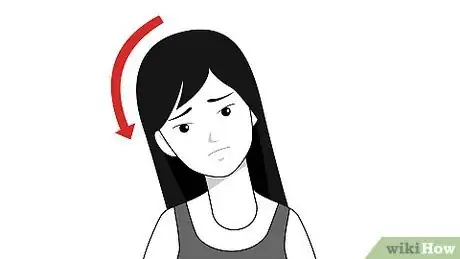






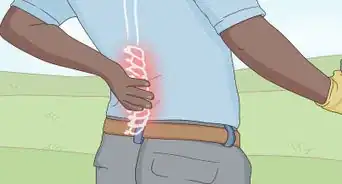



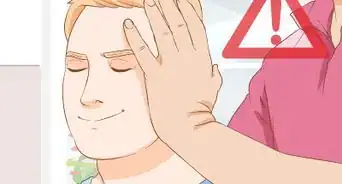
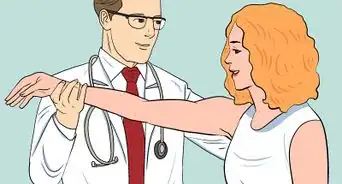
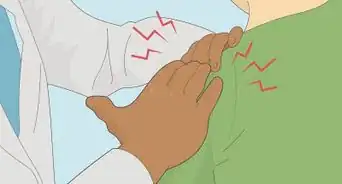

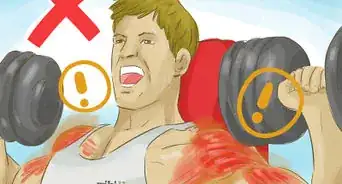

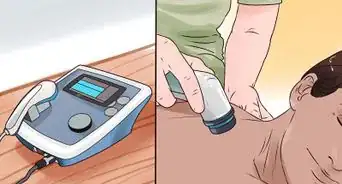
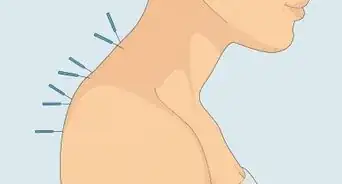











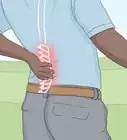





































Medical Disclaimer
The content of this article is not intended to be a substitute for professional medical advice, examination, diagnosis, or treatment. You should always contact your doctor or other qualified healthcare professional before starting, changing, or stopping any kind of health treatment.
Read More...